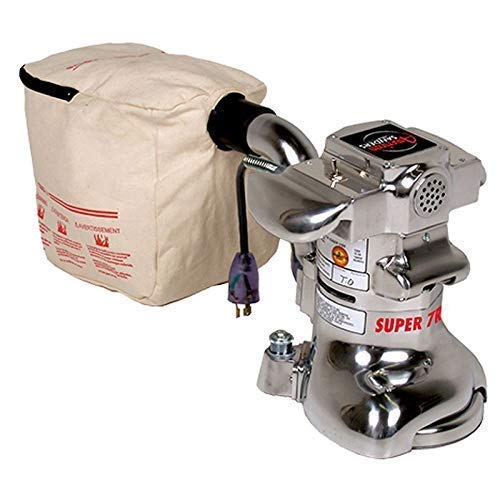Choosing the Right Sander
NOTE from Val: We've had more than a couple of dozen inquiries as to which sander is the best, so James Thomas from TheToolSquare.com offered to give us a run-down. I've included photos and my Amazon affiliate links of each type of sander before each description. They are not my recommendations, only for reference. For James' recommendations with links, you'll find them at the end of this article.
Here's James...
Craft markers and artists use a variety of power tools to create their artworks, and one of the most common power tools is the sander. The sander uses sandpaper, attaching it on the base of the power tool to smoothen the edges of a material that the artist is working on. There are multiple types of the sander, and one should be familiar with these devices to use them more efficiently. When someone masters the use of a sander, any material that they are working on would be smoothened perfectly. This would give the artwork a finer detail and a better texture, making it more valuable and expensive. Hand sanders come in different shapes and sizes, and if you are working on different materials and using power tools to smooth their edges, familiarizing yourself with some of the most common power tools can be a great idea.
Belt Sanders
Belt sanders are a staple in most modern workshops. This power tool uses a sanding belt that is wrapped around the drums, which are the front and back. When the rear drum begins to motorize, it would result in the front drum moving freely. These drums would stay in the center because of a tracking adjustment knob installed in each device, and there are different shapes and sizes available, which hugely depends on the skill of the person using the device. For starters, it is recommended that they use a smaller belt sander because it is easier to control. For those who have a lot of experiences in handling these type of tools, it is recommended that they use the larger ones. When you master the use of a belt sander, you can use it to smoothen the surface of different materials, such as wood. Because of its usability, many people find it handy when used in creating furniture pieces.
Disc Sanders
Disc sanders are used to smoothen large areas. It is perfect for creating large furniture pieces that are made from wood and stone. Most people find this power tool familiar because it can be seen attached to power drills. The sandpaper disc rotates using the power from the drill, and it can finish the job fast. Many craft makers are using the disc sander to smoothen the surface of the material they are working on, and it is time-efficient compared to sanding it manually. One of the advantages of using a disc sander is that the result would always look better because the user has more control where they wanted the disc sander to be. The powerful disc sander would smoothen any areas that the user wishes to work on.
Detail Sanders
Detail sanders are known by many names – triangle sander, mouse sander, and corner sander. This sander looks like flat iron, and it has a triangular pad which uses sandpaper that is self-adhesive. It can also come with multiple attachments that would make it easier to handle, especially when working with materials that have fine details. The detail sander can also get through hard to reach areas or deep crevices that are mostly inaccessible to most sanders. One of the primary use of a detail sander is to smoothen odd shapes that can be a difficult task when using normal-shaped sanders. Many craft workers who are doing detailed projects are using this type of sander, making their jobs easier.
Drywall Sander
Drywall sanders are known for its long pole, and its design is similar to a metal detector. Some drywall sanders are also equipped with a dust collector to minimize the amount of dust produced when sanding a surface. Drywall sanders can be used to smoothen surfaces that are hard to reach, like ceilings. When using a drywall sander, the surface can be smoothened without having to rely on ladders or chairs. Those who are using the drywall sander are saying that they can finish their task without being too messy because of how the drywall sander is collecting the dust particles for them, and they recommend it because of these features.
File Sanders
File sanders are also known as finger sanders, and these are powered using air or electricity. It also has a narrow belt, allowing the device to fit in tiny spaces. Auto body repair shops are using file sanders to smoothen the hard to reach areas on a vehicle, and many craft makers who are working on detailed designs also find the file sander as a reliable power tool. Craft makers who are using the file sanders are saying that they are saving huge amounts of time using this powerful tool because they no longer need to rely on sandpaper to finish the job. It is a great tool that can deliver results.
Orbital Sander
Craft makers can use the orbital sander using a single hand, and it gives them excellent handling. This type of sander is used mainly for finishing jobs, and those which require ultra-fine work. Ultra-smooth surfaces and smoothening of rough edges are some of the results that can be achieved using this type of power tool.
Oscillating Spindle Sander
Also known as the OSS, this sander is mounted, and it is one of the members of the drum family. It features a sanding drum, which can be raised or lowered. It is mostly used in woodworking projects and for smoothening boards. It also works perfectly on curved edges.
Random Orbital Sander
The random orbital sander has a striking similarity with the orbital sander in terms of aesthetics. However, the difference can be noticed with their pads, as the random orbital sander has a circular one. The pads have a diameter of five or six inches, and using it depends on the area of the surface that the craft maker is working on. Many workshops use random orbital sander because of its versatility.
Sanding Block
Sanding blocks do not use power, and it is one of the oldest known sander used by craft makers. This is a simple wooden block that is equipped with sandpaper on its base, and it is used manually.
Table Sanders
These sanders are large, and it is very powerful, making it an ideal tool for large workshops which specializes in using wood as their primary material. However, experts are saying that using the table sander for precision work is not recommended because it can damage the material. Use this power tool only when working on large materials without fine details.
Drum Sander
Drum sanders are one of the most powerful hand sanders in the market, and it requires two people to operate it. If you are not careful when using the drum sander, it can damage the surface, and it can also cause injuries.
Edging Sander
Edging sanders are also a type of heavy-duty sander, and it is used for big-scale projects. This power tool should be handled with care because it can cause injuries to those who will be using it.
What are the best hand sanders brands in the market today?
There are many hand sanders available in the market today, but only a few brands create the best ones that can be used in a variety of projects. Based on the current information on the market, the best hand sander brands are the following:
(affiliate links)
• Black & Decker 5-inch Random Orbit Sander
• BLACK+DECKER 1/4-Sheet Orbital Sander
• Genesis Grey Corner Palm Sander
• BLACK+DECKER Mouse Detail Sander
• Black & Decker 5-Inch Palm Grip Orbit Sander
• Makita 4-1/2-Inch Finishing Sander
• BOSCH 120-Volt Random Orbit Sander Kit
• DEWALT Orbital 1/4-Sheet Sander
• DEWALT 3-Amp 5-Inch Random-Orbit Sander
• Festool RO 150 FEQ Rotex Sander
Thank you, James taking the time to put together this great run-down for my audience. To find James and more of his recommendations and reviews, visit The Tool Square.

James Thomas, author or this article, is the man behind Thetoolsquare.com where you get unbiased and detailed reviews of the best DIY and Woodworking tools on the market.
Love My DIY Home is a participant in the Amazon Services LLC Associates Program, an affiliate advertising program designed to provide a means for sites to earn advertising fees to support their websites by advertising and linking to amazon.com.












